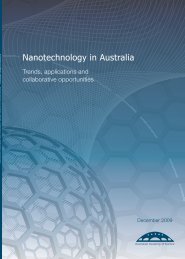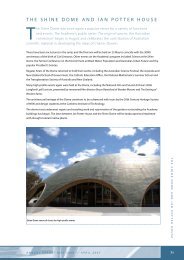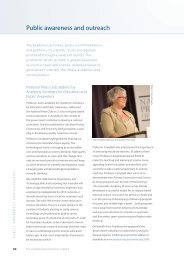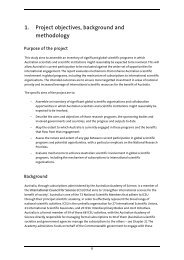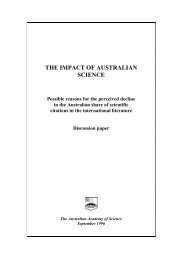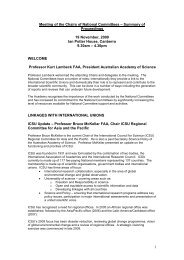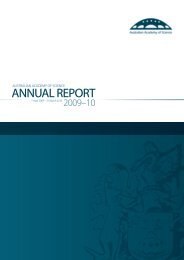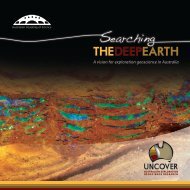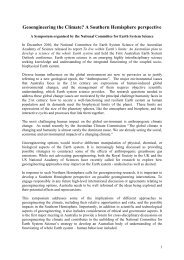Australia's Major National Research Facilities - Australian Academy ...
Australia's Major National Research Facilities - Australian Academy ...
Australia's Major National Research Facilities - Australian Academy ...
You also want an ePaper? Increase the reach of your titles
YUMPU automatically turns print PDFs into web optimized ePapers that Google loves.
The initial capital cost, estimated to be approximately $206 Million, is for the synchrotron source and an initial set of 9 beamlines, as<br />
detailed in the <strong>National</strong> Science Case (NSC). The operating costs are estimated to be $15 Million rising to $17 Million, as mentioned<br />
on page 45 of the NSC. There are of course additional capital and operating costs associated with additional beamlines, but such<br />
expansion has not been accurately costed as yet, and will depend on the future demand for specific beamlines from the national science<br />
user base. Comparison of a free electron laser with a 3rd generation synchrotron source is potentially sensitive in the sense that 3rd<br />
generation technology is proven and FELs as a 4th generation x-ray source is in the developmental stage.<br />
(II) Over $30 Million<br />
Heavy Ion Accelerator Facility<br />
Operated by the Department of Nuclear Physics, <strong>Australian</strong> <strong>National</strong> University The facility is comprised of a 15 Million Volt tandem<br />
accelerator coupled to a Superconducting Linear Accelerator. A wide range of energetic heavy-ion beams such as 300 MeV Ni-58, are<br />
provided for nuclear structure and nuclear reaction studies and various applications including materials science research, and<br />
environmental studies using Accelerator Mass Spectrometry.<br />
Capital Investment: Approximately $50 million<br />
Personnel:<br />
7 Tenured Academic Staff<br />
5 Postdoctoral/<strong>Research</strong> Fellow Staff (ANU and ARC Funded)<br />
5 Scientific Staff at PhD Level for Facility Operation and Development<br />
11 General/Technical Staff<br />
6 Visiting Fellows (long-term)<br />
8 PhD students currently resident and numerous others affiliated with outside users.<br />
Users: Large cohort of local and <strong>National</strong> users (University, Government and ARC funded) and International Users including UK<br />
Physicists who have access through a formal agreement with the Engineering and Physical Sciences <strong>Research</strong> Council (U.K.). Over<br />
40 Short-term visitors in 2003 as outside users.<br />
(III) Range $10-30M ( including aggregated laboratories)<br />
Materials engineering (ANU)<br />
The Electronic Materials Engineering (EME) Department conducts interdisciplinary research in areas such as condensed matter<br />
physics, materials science and device engineering. This includes world-class research in the growth, structure, properties and<br />
applications of electronic materials. The diversity of the Department's research is one of its key strengths, underpinning its broad<br />
collaborative base and its ability to attract students and researchers from a range of disciplines. The Department’s equipment and<br />
infrastructure is valued at more than $20m, and it currently employs 6 recurrently-funded academic staff, 16 externally-funded earlycareer<br />
researchers, and 8 general staff. The Department typically has 15-20 PhD students. The Department’s annual budget is over<br />
$3m, with approximately 55% of this coming from competitive granting schemes.<br />
Ion-Beam Modification and Analysis of Materials<br />
28



